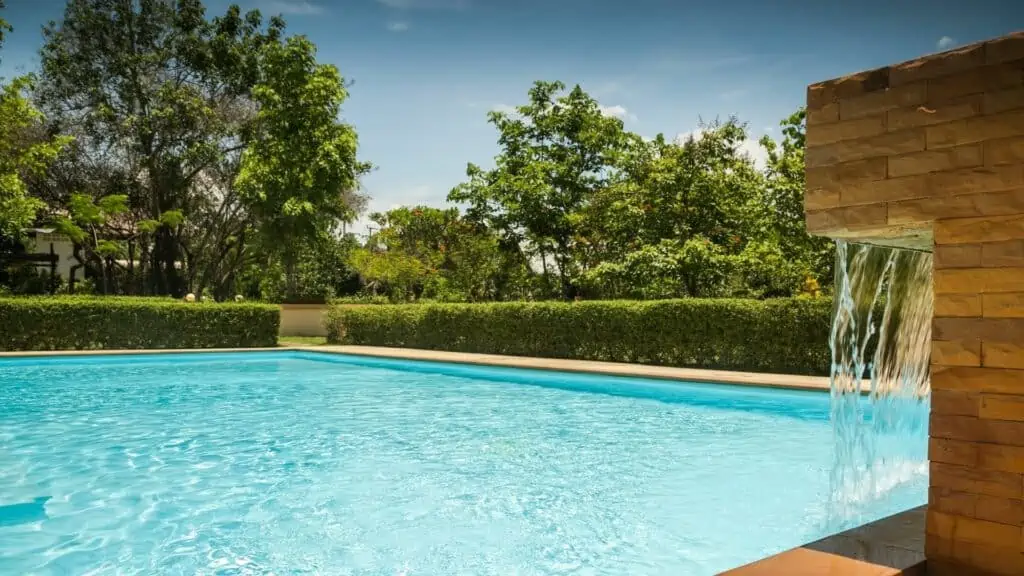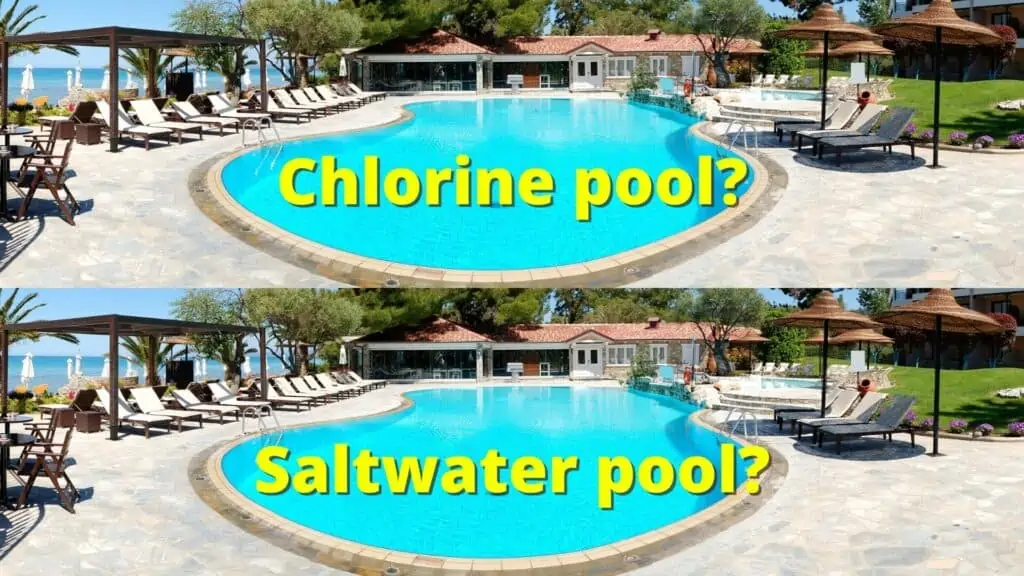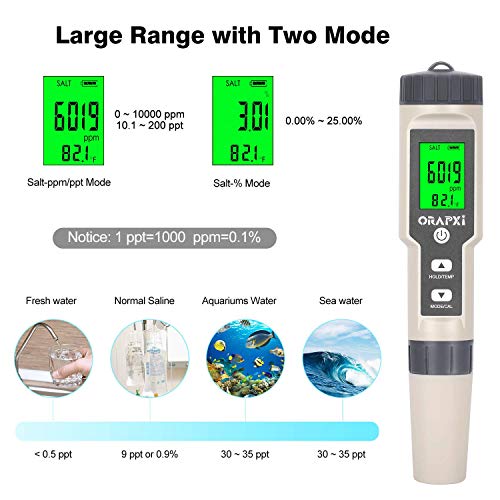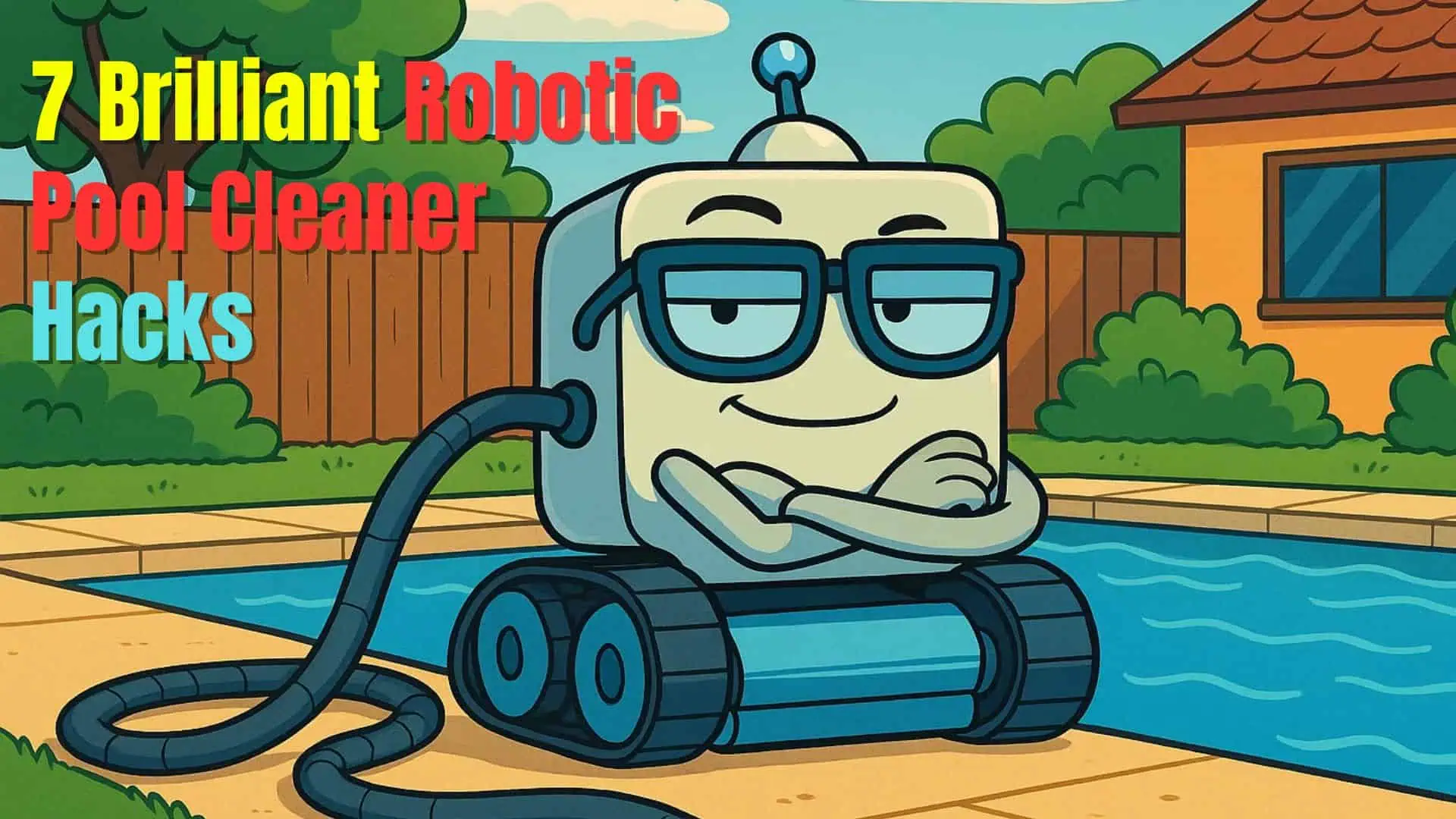So, by the sound of it, you either have or are thinking about installing a saltwater pool. Great choice, by the way, as I have recently changed my pool to salt water! So, what does owning a salt water pool entail? And what makes them so different from a traditional chlorine pool?
Many pool owners seem to believe that having a salt water pool will require a great deal more maintenance than a regular chlorine pool, but that is not actually the case.
Follow our easy guide to salt water pool maintenance below to find out everything you need to know about maintaining your saltwater swimming pool.
Let’s dive right into it!


Salt water pool care involves regular maintenance to ensure proper sanitization and balance of chemicals. It includes monitoring salt levels, pH levels, and regularly cleaning the pool’s salt cell. Additionally, it’s important to check for any calcium buildup and ensure proper filtration. Regular testing and adjustment of chemicals are necessary for optimal salt water pool care.
Salt water pool maintenance: The basics
Saltwater pool owners across the globe will tell you that this type of pool is far better than the average chlorine swimming pool (which we will go into more detail with later on).
Let’s focus on the basic rules to maintain a salt water swimming pool all year round.
Sanitation
Keeping your pool free from dirt and debris is essential for ensuring the water is clean and safe to swim in. While chlorine plays a big part in destroying some bacteria, salt water pool owners also have a role to play.
Showering before entering the pool will reduce the build-up of bacteria, and it goes without saying that you should stay away from the pool water if you are unwell.
Water pH balance
If your pool’s pH level is between 7.2 and 7.6 then you’re doing it right. This not only helps with pool sanitation, but it is also vital for protecting skin and eyes from irritation. The water is nice and clear when your pH level is in range. If it starts to look murky or cloudy, the pH levels should be your first to check.
Pool circulation
A working pool pump and filter are essential during the summer when they will be used from 8 to 12 hours a day. The circulation system disperses chemicals evenly throughout the pool water and filters any dirt and debris to waste.
Regular pool inspection
During the summer, you should inspect your pool on a daily basis. Looking for cracks, leaks and any other damage is important if you want to avoid parting with your hard-earned cash. Checking water levels and regularly vacuuming your pool are all part and parcel of the job.
How to maintain a saltwater pool : A step by step guide
Salt water pool maintenance for beginners is not that onerous.
Salt water pools are pretty easy to maintain if you consistently check over them. You will need to perform some tasks on a daily basis, whereas others may only need to be done every few weeks or even months.
Step 1: Regularly clean filter, pump and skimmers
The pool’s filtration is extremely important. If damaged, this could lead to a pool closure until it can be fixed. To ensure this doesn’t happen, you should check the skimmer basket and pump strainer basket several times a week. Leaves, bugs, dirt and other debris that get through these baskets can clog the filter, leaving the pool water cloudy and dirty.
A pool skimming net is a great tool for manually picking out larger pieces of debris. For smaller pieces, a pool vacuum is recommended. Robotic and automatic pool vacuums are handy if you don’t have time to do it yourself.
Step 2: Clean the salt cell
A salt cell produces the chlorine in saltwater pools as opposed to manually adding it. Over time, calcium and other minerals tend to build up on the inside plates, in which case they need to be cleaned. So, how do you clean a salt cell? Let’s take a look.
- Begin by removing the cell and manually picking out any build-up you can see with your hands.
- Use your garden hose to wash the cell out for any parts you may have missed.
- It’s time to soak the cell in a muriatic acid solution. We recommend purchasing a pre-mixed solution from your local pool supply store, as handling acid can be dangerous.
- Soak the salt cell in the solution for 15 minutes before placing it back in the plumbing system.
Step 3: Maintain surrounding areas
As well as keeping the pool floor and tiles clean, the deck around the pool will collect a build-up of salt over time. At least once a week, you should hose down the area and push the water back into the pool with a soft brush.
Step 4: Keep an eye on your pool’s water chemistry
Testing your water levels is vital when it comes to maintaining the pool water. This should be done every couple of days during the summer months and every couple of weeks throughout the winter.
Don’t hesitate to ask for advice from professionals at your local pool supply store; they will always be more than happy to help.
Saltwater pool checks
We have put together a short list of saltwater pool maintenance tasks that should be completed every day, week or month. It may seem like a lot, but taking 5 minutes out of your day to check things over is nothing in the long run.
Every day
When the pool is used the most, you will probably have to clear out debris daily with your skimmer net. This is also a good time to check the skimmer and clear out the basket.
Every week
The pool must be vacuumed at least once a week, twice if used daily. For this, we recommend purchasing a robotic vacuum so that you can free up some of your time (the most popular is the Dolphin Nautilus CC Plus).
You should also look to rinse the filter, pump and skimmer down with a hose.
You will need to test the pH levels and free chlorine level using test strips, or you can purchase a digital water quality meter that may be more accurate.
Salt water pools generate chlorine using a salt chlorine generator (see the diagram of a CircuPool CORE35 Salt Chlorinator System), so there is no need to manually add this chemical, instead, you just add pool salt to the salt water cell.
Once a month
Salt water levels should be checked at least once a month. To do this, you can use saltwater test strips or a Digital Salinity Tester for Salt Water. If salt levels need to increase, simply add more salt to the salt system.
Salinity levels should be between 3000-3500ppm but check the manufacturer’s instructions just to be sure.
Here are a couple of other levels you should also keep an eye on:
Calcium hardness
Too little or too much calcium can cause cloudy water and damage to pool walls and other equipment. Anything between 200-400ppm is looking good.
Stabilizer
Chlorine levels deplete over time, particularly in outdoor pools. In theory, stabilizers act as an SPF to chlorine. These levels should sit at around 70-80 ppm and if they are too high, adding fresh water is recommended. If too low, you will need to add cyanuric acid.
Once every three months
Check the salt cell for any build-up and clean it up as required.
Saltwater pool vs regular chlorine pool: The difference

Saltwater pools and traditional chlorine pools are not too dissimilar to one another. Both include water and chlorine, so what’s the difference between the two?
Saltwater pool
Before we get into it, we want you to know that saltwater pools are not filled with salty water although salt is added to the water on a low scale.
Saltwater pools generate their own chlorine as opposed to chlorine pools, where it is added manually. This is probably the biggest difference between the two, as saltwater pools require less chemicals and attention.
Although the self-generating of chlorine may sound appealing, this does come at a cost and seeking professional help adds to this.
Also read: Benefits of a saltwater pool
Chlorine pool
Installing a chlorine pool is less expensive but requires more maintenance. Balancing chlorine levels can often be a nightmare if you add too much or not enough.
However, chlorine pools do not require as much electricity and are also easier to fix by yourself rather than by contacting a professional.
Salt Water Pool FAQs
How much does it cost to maintain a saltwater pool?
The upfront costs for a saltwater pool are certainly higher than for a similar traditional chlorine pool. The salt cell generator alone can cost between $1000 and $2500 to install.
However, the ongoing costs can be lower. When we look at the cost of adding chemicals to a saltwater pool, this may be around $100 a year as opposed to perhaps $800-$1000 for a chlorine pool.
Chemicals aren’t the only cost, though, as saltwater pools require more electricity and are much more complex than chlorine pools. This is where it can become expensive if you need to seek professional help.
Can you use pool shock in a saltwater pool?
Yes, it is perfectly okay to use pool shock in saltwater pools. Although the system has a ‘super chlorinate’ option, there is nothing wrong with adding a little pool shock to clean up cloudy water. Using this product will not affect the pool in any way, either.
We recommend shocking your pool regularly during the summer and every now and again during the colder months to keep algae and other bacteria at bay.
How do I winterize the salt chlorinator?
This is a great question, as it is unlikely that your saltwater pool warranty will cover freeze damage. To winterize the salt chlorine generator, you will first need to drain every last drop of water from the entire manifold assembly, including the cell and the tri-sensor. You may even be able to remove the cell completely if your manufacturer recommends it.
If you do remove it altogether, remember to cap the check valve connections to prevent water from entering.
Does salt water pool taste salty?
It is a common misconception that salt water pools will taste salty, like sea water. But this is not the case. Although salt is added, it is put into a salt water chlorinator, which then converts the sodium chloride (salt) into chlorine before it enters the pool.
The salt level in sea water is around 35,000 ppm (part per million), human tears are around 9,000 ppm, but a salt water pool is normally only around 3,000 ppm.
If you haven’t made the switch, find out how to convert to a saltwater pool here.








Leave a Reply